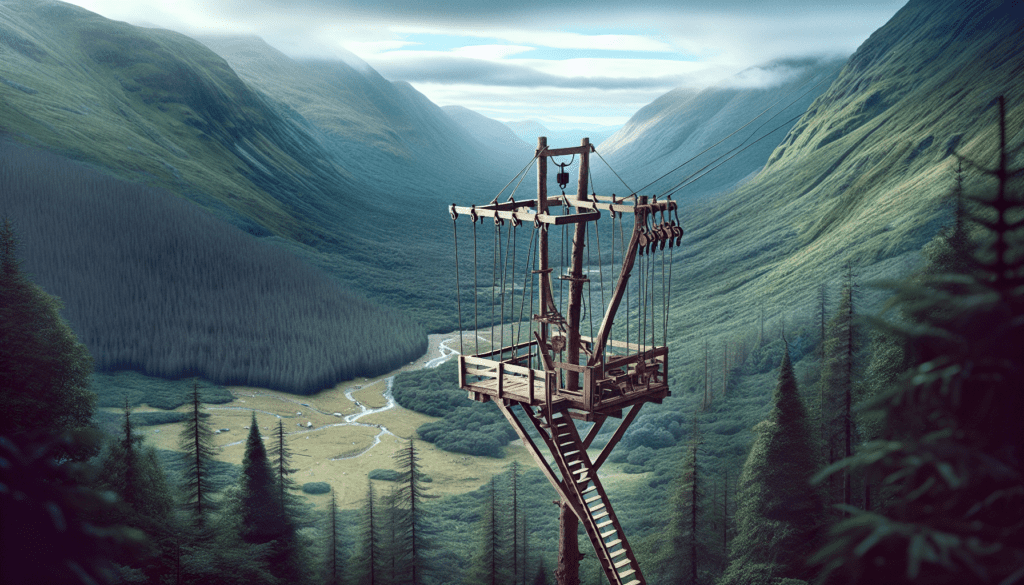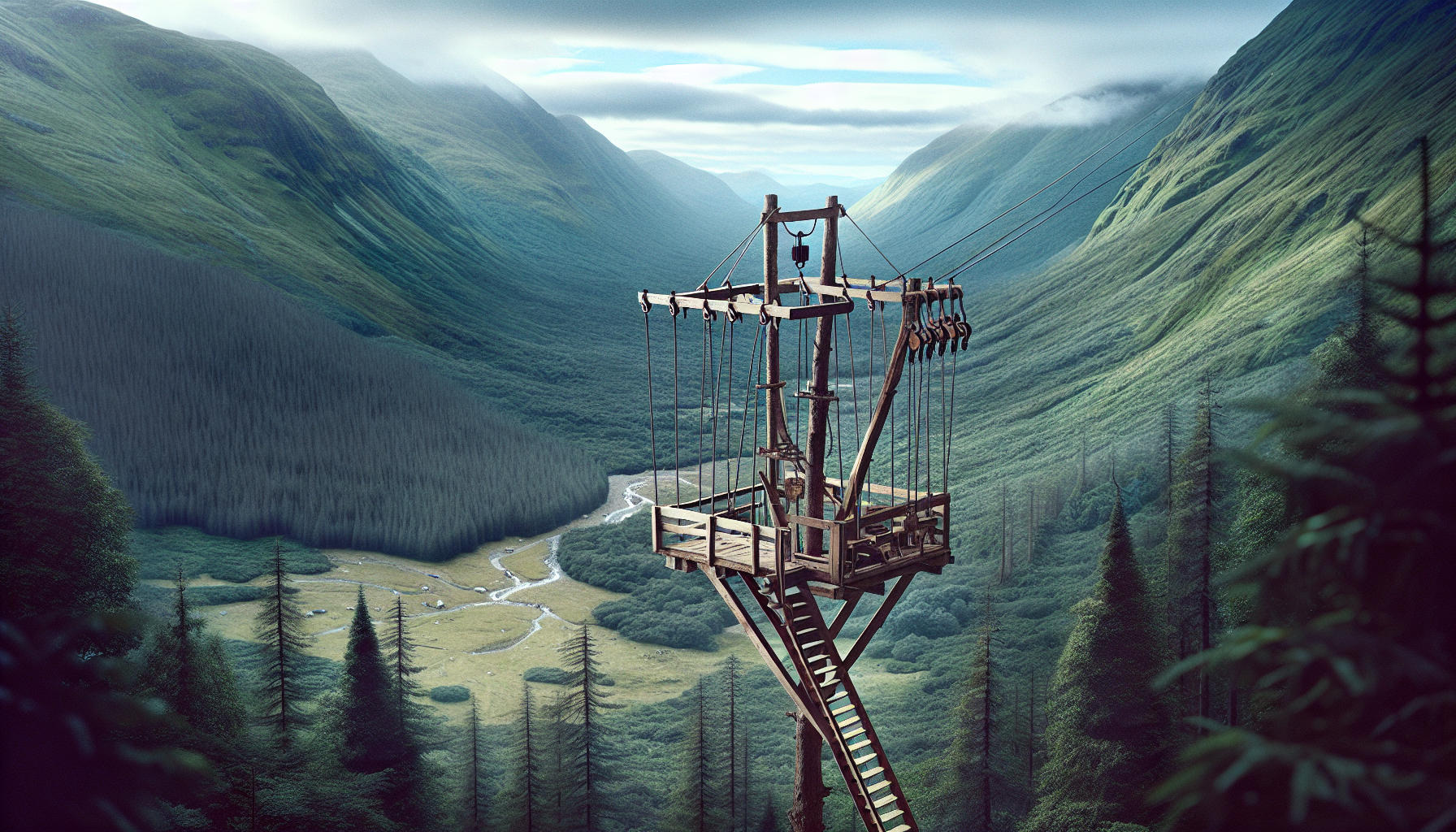Imagine you’re deep in the vast wilderness, surrounded by towering trees and rugged terrain. Suddenly, you find yourself in need of a quick and efficient way to access higher ground. Don’t fret, my adventurous friend, for I have just the solution for you! In this article, we will guide you through the simple steps of constructing your very own elevator in the wilderness. With a little creativity and resourcefulness, you’ll be able to elevate yourself to new heights in no time. So let’s get started on this exciting journey of wilderness engineering!
Choose a Suitable Location
When making a simple elevator in the wilderness, the first step is to choose a suitable location. It’s essential to assess the terrain to determine the best spot for your elevator. Look for an area that is relatively flat and free from obstacles. This will make the construction process easier and ensure the elevator operates smoothly.
In addition to the terrain, it’s necessary to identify sturdy anchor points. These anchor points will bear the weight of the elevator and ensure its stability. Look for strong trees or large boulders that can serve as reliable anchor points. Make sure these anchor points are easily accessible and located in close proximity to where you plan to install the elevator.
Consider accessibility when choosing a location for your elevator. Think about how you will transport materials and equipment to the site. If the location is difficult to access, it may present challenges during the construction process. Choose a location that is easily reachable and allows for convenient transportation of materials and tools.
Gather Materials and Tools
Before starting the construction of your elevator, gather all the necessary materials and tools. Here are the essential items you will need:
- Ropes or cables: These will be used to lift and lower the elevator carriage.
- Pulleys or winches: These components will help in the movement of the ropes or cables.
- Strong fasteners and connectors: Use these to secure various parts of the elevator together.
- Anchoring devices: These will be used to anchor the elevator to the sturdy anchor points.
- Safety equipment: It is crucial to have safety harnesses, belts, and other protective gear to ensure the safety of those using the elevator.
By having all the required materials and tools ready, you can ensure a smoother construction process.

Design Your Elevator
Designing your elevator is an important step in the construction process. You need to determine the type of elevator you want to build. Some common types include a simple platform elevator or a box-like carriage elevator. Consider the purpose and load capacity required for your elevator to make an informed decision.
Once you have determined the elevator type, calculate the load capacity it needs to support. This will help you choose the appropriate materials and ensure the elevator can carry the intended weight safely.
Plan the layout and dimensions of your elevator. Consider the space available at your chosen location and design the elevator accordingly. Make sure to include access points for easy entry and exit.
Prepare the Anchor Points
Before installing the elevator, it is crucial to inspect and reinforce the anchor points. Check the trees or boulders for stability and ensure they can support the weight of the elevator. If necessary, reinforce the anchor points by adding additional support or using reinforcement techniques.
Ensure proper spacing between the anchor points to provide maximum stability to the elevator. The distance between the anchor points should be in line with the dimensions planned for the elevator.
Secure the anchors to sturdy trees or boulders using appropriate fasteners and connectors. This will ensure that the anchor points stay securely in place, even in challenging weather conditions.

Build the Elevator Carriage
Constructing a sturdy frame is the first step in building the elevator carriage. Use strong and durable materials, such as wood or metal, to create a robust frame. The frame will provide the structural integrity needed for the elevator to function effectively.
Once the frame is built, add a base platform to create a secure platform for the elevator carriage. This platform should be wide enough to accommodate the planned layout and dimensions of the elevator. Ensure it is securely attached to the frame for added stability.
Install walls and a roof to enclose the elevator carriage. This will provide protection from the elements and enhance the safety of those using the elevator. Make sure to leave enough space for access points, such as doors or openings, for easy entry and exit.
Install Guide Rails or Channels
To ensure smooth movement of the elevator carriage, it is essential to install guide rails or channels. Measure and mark the path where the elevator carriage will move. Use these markings to position and secure the rails or channels in place.
Make sure the guide rails or channels are aligned and level. This will prevent any issues with the movement of the elevator and ensure a safe and reliable operation.
Add Support and Safety Features
For added stability, install additional cross beams along the frame of the elevator carriage. These cross beams will provide extra support and help distribute the weight evenly. This is especially important if you anticipate heavy loads being carried by the elevator.
Attach safety harnesses or belts inside the elevator carriage. These will help ensure the safety of the passengers by preventing falls or accidents during the elevator’s operation.
Include emergency stop mechanisms to allow for immediate halting of the elevator if needed. This will provide an extra layer of safety in case of any emergencies or malfunctions.
Attach the Pulleys or Winches
Determining the number of pulleys or winches needed depends on the type and design of your elevator. Mount the pulleys or winches securely to the anchor points or the elevator structure. Make sure they are properly aligned to ensure smooth movement of the ropes or cables.
It is crucial to ensure proper alignment and tension of the pulleys or winches. This will prevent any issues with the movement of the elevator carriage and make sure it operates reliably.
Secure the Ropes or Cables
Thread the ropes or cables through the pulleys or winches, following the designated path. Ensure the ropes or cables are properly tensioned to support the weight of the elevator carriage and any intended load. This will prevent any sagging or excessive strain on the elevator components.
Connect the ropes or cables securely to the elevator carriage, ensuring they are properly fastened. Use appropriate connectors and fasteners to ensure a stable and secure connection. Perform a thorough check to ensure there are no weak points or loose connections.
Ensure Safety and Maintenance
To ensure the longevity and safe operation of your elevator, it is important to regularly inspect and maintain it. Perform routine checks to identify any signs of wear or damage and address them promptly. This will help prevent any failures or accidents during the elevator’s use.
Monitor the anchor points for any signs of wear or damage. Check for any shifting or weakening of the trees or boulders to which the elevator is anchored. Reinforce the anchor points if necessary to maintain the stability and safety of the elevator.
Train users on proper operation and safety precautions. Provide clear instructions on how to operate the elevator safely, including emergency procedures. Emphasize the importance of following safety guidelines to prevent any accidents or injuries.
By following these steps and taking the necessary precautions, you can successfully build a simple elevator in the wilderness. Enjoy the convenience and functionality of your homemade elevator as you navigate the challenging terrain with ease.

